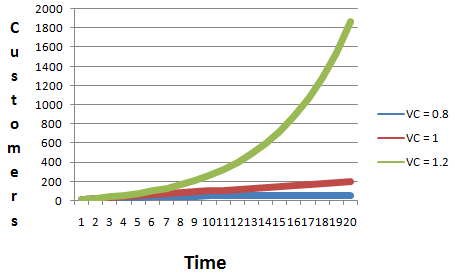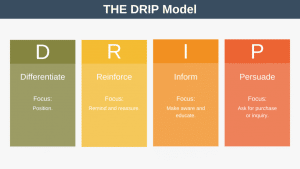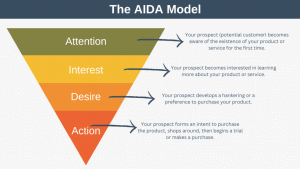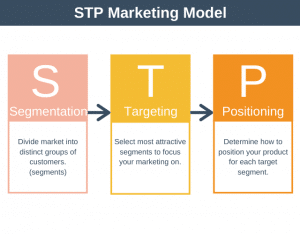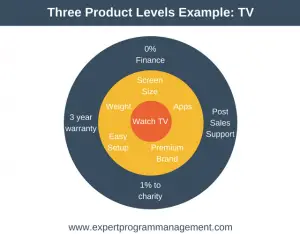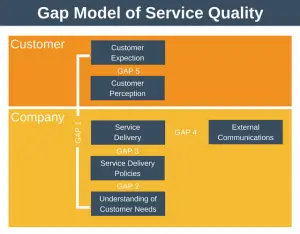Companies that rely on viral growth depend on their customers to do their marketing for them. Because of this these companies don’t need large advertising budgets. For example, when was the last time you saw a Facebook advert? Probably never. This article will examine the key factors for success (the viral coefficient) in building a viral product or business.
Viral growth is very different from word-of-mouth growth. Word-of-mouth growth happens because one customer recommends a product or service to another customer. Viral growth on the other hand, occurs because customers encourage other customers to use the product or service simply through normal product use. Products and services that rely on viral loops for growth typically don’t charge users for the service as they need to remove all possible friction from new users signing up for the service.
A typical viral loop will allow users to invite their friends to the service, import their contacts to the service, or send an invite to a specific friend. Of course, if your not a user and you receive an invite from a friend then this draws you into the loop. Now that we know what a viral loop is, how can we tell if a particular viral loop is successful or moving towards being successful?
The answer is by quantifying our viral coefficient. This coefficient informs us as to how many new users will start to use a service as a direct result of each new user who uses the service. Basically, the higher this coefficient the faster the growth in users will be.
Let us look at a simple example. Suppose we have a viral coefficient of 0.3. This means that for every 100 customers that sign up, they will invite 30 others to sign up. Those 30 customers will then invite 3 more customers to sign up. At this point the viral loop is beginning to fizzle out as we now have just 3 customers who don’t invite anyone else. If you want to be really successful you need to be aiming for a viral coefficient of greater than 1. This means that every new user will invite more than one further user to join the service. This is very similar to how compound interest works. The viral loop can be easily understood by looking at the following diagram.
As you can see from the example, it isn’t until your viral coefficient gets above 1 that your product or business starts to experience exponential growth. To accurately determine your viral coefficient you need to understand not just the number of users each new user invites but also your churn rate over a period of time.
Companies that want to make successful viral products need to firstly capture the information that will allow them to determine their viral coefficient, and secondly focus their attention making product improvements to increase the value of the coefficient.
